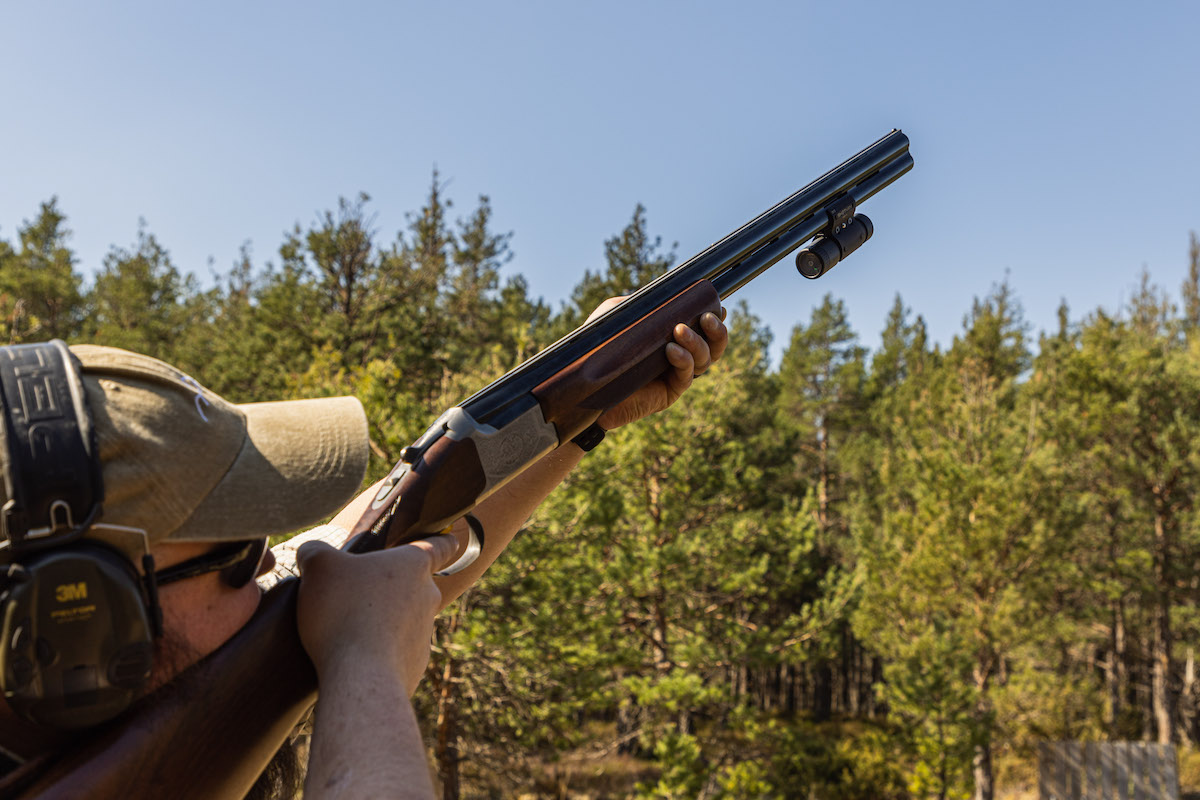Martini rook and rabbit rifle
This delightful blackpowder gun was overtaken by the .22 rim fire but still has appeal, says Lewis Potter

Fans of the film Zulu will be familiar with the Martini-Henry rifle used by British troops at that period. The Martini-Henry got its name from the combination of the Martini action mated to Alexander Henry’s system of rifling. A blackpowder rifle adopted for military use in 1871, it lived on in conversions to 20-bore and .410, as a smoothbore Greener prison gun, and small game rifles. In its later years, it was used as the basis of the Greener GP shotgun and BSA small-bore target rifles, albeit the later target models appeared in a somewhat modified form.

Martini rook & rabbit rifle
Vermin rifle
The rook and rabbit rifle was the defacto vermin rifle until overtaken by the ubiquitous .22 rimfire. While many of these older rifles were originally chambered for blackpowder cartridges, it was the development of smokeless powder that really made the .22 a practical and effective rifle. That, a lack of ammunition and the growing hold of firearms legislation signalled very much the end of the rook and rabbit rifle, to the extent that many were converted to smoothbore, usually .410, though some survived to be sleeved down to that competing cartridge, the .22 rimfire.
What makes this example a little special is that not only is it a scaled-down Martini but it also sports Henry’s polygonal rifling, so it really is a miniature Martini-Henry. It is chambered for the .300 or .295 cartridge introduced around 1874.
A Belgian copy
It is not unusual to find rook and rabbit rifles with their origins in Belgium — even quite prominent British makers sometimes sourced component parts from Europe. However, this example is unashamedly Belgian; it bears Liège proof marks but, in spite of its obvious good build quality, it has no maker’s name, which suggests that it was one of many similar guns built to enhance the reputation of others.

It copies the layout of the slightly hump-backed Mk IV Martini quite faithfully, with the pear-shaped cocking indicator on the right side of the action body. Even the cross-pin, which holds the rear of the breechblock, is a kind of sprung split pin as per the original design. This might seem a less-than-secure method of assembly but this pin takes no load upon firing, as the back curved section of the breechblock is supported against the rear wall of the body.
The barrel is just over 28in long, tapered from the nock’s form and fitted with sights graduated up to 350 yards. If this seems a bit optimistic — after all, a rabbit viewed at 70 yards will appear about the same size as the foresight — a rifle like this, chambered for the little straight taper .300 cartridge, will reach that sort of distance. Having tested rook and rabbit rifles against the .22 rimfire, many of the former perform better than the .22 past 200 yards, but the sights mean accuracy is limited.
While ammunition became obsolete, a growth of interest in “vintage” arms meant cartridge cases became available once again for the keen home-loader. Yet this can be quite a learning curve, as I know from experience: getting the best accuracy from Henry’s rifling sometimes seems more art than science.
Conclusion
For years, these delightful little rifles could only be held on a firearms certificate, which limited the market, if not the appeal. Some years ago many of them were added to what is referred to as the Home Office “obsolete calibre” list (firearms chambered for obsolete cartridges), meaning in original condition and without possessing any ammunition, they can be kept in the same way as an antique muzzle-loader, without a firearms certificate.








